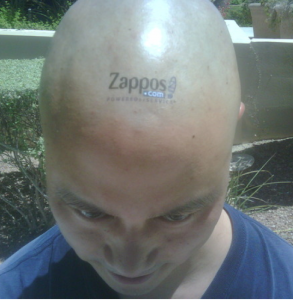 I know I don’t act like what people think a CEO should act like, but I do think like one. I love numbers and know that’s part of what makes us successful. I look at EVERYTHING and measure its return-on-investment. We look at what is best for business growth, and how to work with talent to grow both personally and professionally. We strive on better improved client service every, single day. We don’t waste our time on things that don’t bring us business, we don’t work with clients that aren’t a fit, and we don’t try new things because they’re fun.
I know I don’t act like what people think a CEO should act like, but I do think like one. I love numbers and know that’s part of what makes us successful. I look at EVERYTHING and measure its return-on-investment. We look at what is best for business growth, and how to work with talent to grow both personally and professionally. We strive on better improved client service every, single day. We don’t waste our time on things that don’t bring us business, we don’t work with clients that aren’t a fit, and we don’t try new things because they’re fun.
Don’t get me wrong. Social media IS fun. But it has had the biggest effect on our business growth than anything, including word-of-mouth, has in our four years of existence. So we don’t spend our time with it because it’s fun…it’s become a priority because it works.
On Friday, Mark Wiskup and I hosted a Webinar for Vistage, which was an introduction to social media (see the archive here). After the Webinar, and into the weekend, I had quite a few emails, tweets, LinkedIn mail, and Facebook messages asking me how to sell social media to an executive team. I thought I’d answer that question here.
There are two ways you can sell a social media program to the c-suite:
1. Tie results to the P&L.
2. Tie results to more improved customer service and better efficiencies.
If your CEO is an entrepreneur, he or she wants to hear the idea, how you think it will improve the P&L or customer service, and then they want you to run with it. If your CEO is a “hired gun,” there may be more process behind what you present and how you execute, but the strategy is the same.
When I speak to Vistage CEO groups, I have them tell me everything they’re doing to communicate to their customers, employees, and stakeholders. On that list, you typically find:
* Trade ads
* Trade shows and conferences
* Business publication advertising
* Public relations
* Email marketing
* Marketing brochures
* Radio and television ads
* Customer service department
* Internal and external newsletters
* Golf outings
* Client dinners
* Travel to see clients
Then I ask, “What if you can still do all of this, but have a new way of distributing the information, getting feedback, listening to what your clients have to say, and make changes immediately, instead of when someone becomes unhappy or you have a crisis on your hands? What if you can talk to your customers every day to build loyalty, without having to depend solely on client dinners and golf outings?”
This is where I start to get their attention. Then I ask, “What if, right now, your customer service department or your sales people are hiding an issue from you because they want to try to fix it before you hear about it? For hypothetical sake, let’s say this is happening. What if you learn about it the instant it becomes an issue, because you’re talking to your customers every day, one-on-one, in an informal, and easy, fashion? Don’t you think a lot of your issues could be solved pretty quickly and cost-efficiently?”
If you begin your presentation to the c-suite with these types of scenarios (even better if you have real issues that are happening within your company) and then you show how a social media program can fix a customer service issue quickly, and before it becomes a customer who is no more, you’ll have their attention.
As for how to affect the P&L, that one is easy. There are SO MANY ways to measure the effectiveness of a social media program. Benchmark a few things before you present to the c-suite. Look at:
* Your Web site grade via Web site grader
* Everyone who is on the social networks within your company; look at their Twitter grades
* Compare your traffic, search terms, and key words with your competitors via Compete
* Find your Google page rank via popuri.us
* Assess your share-of-voice via siteVOLUME
* Analyze your social popularity via socialmeter
After you’ve done this, create 30-day, 90-day, six month, and annual goals that affect the bottom line of the company (i.e. drive more traffic to the Web site for increased sales or increase awareness of bi-weekly white papers or podcasts customers can buy).
Then go present the program and show why the company can’t afford NOT to participate in a social media program! If that still doesn’t work, tell them Tony Hsieh, the CEO of Zappos, does it and they just debuted the Fortune 100 list at #23!
If you haven’t already registered for part two of the Vistage social media Webinar series, do so here.